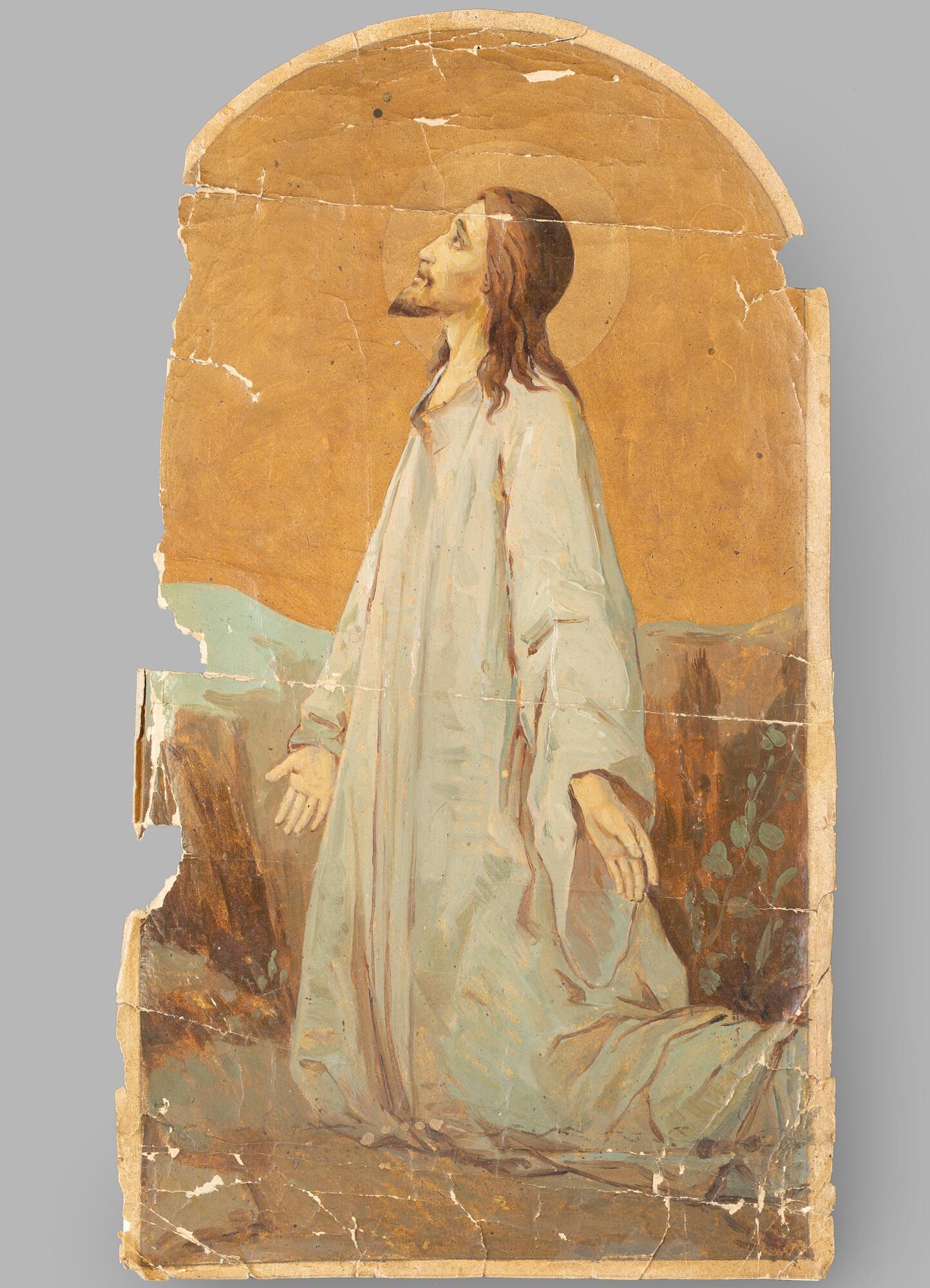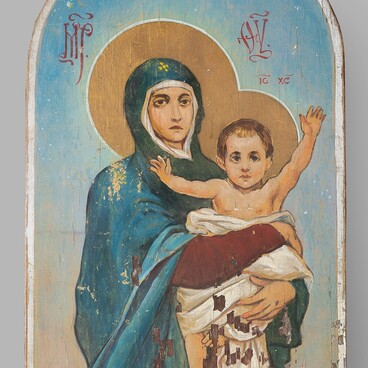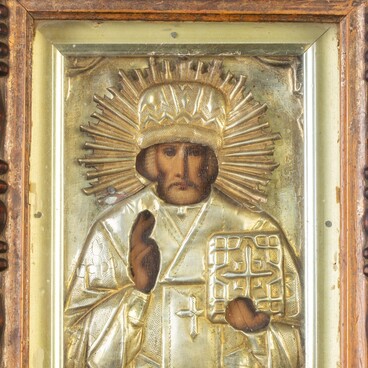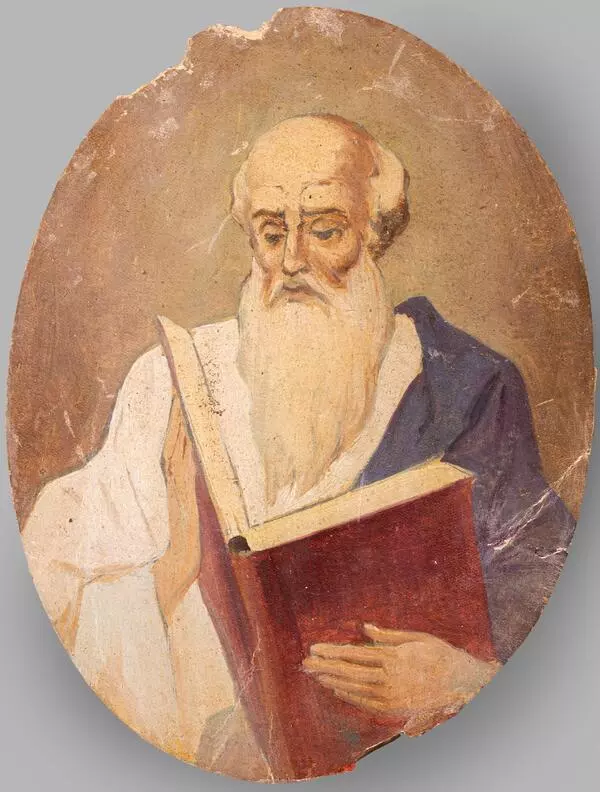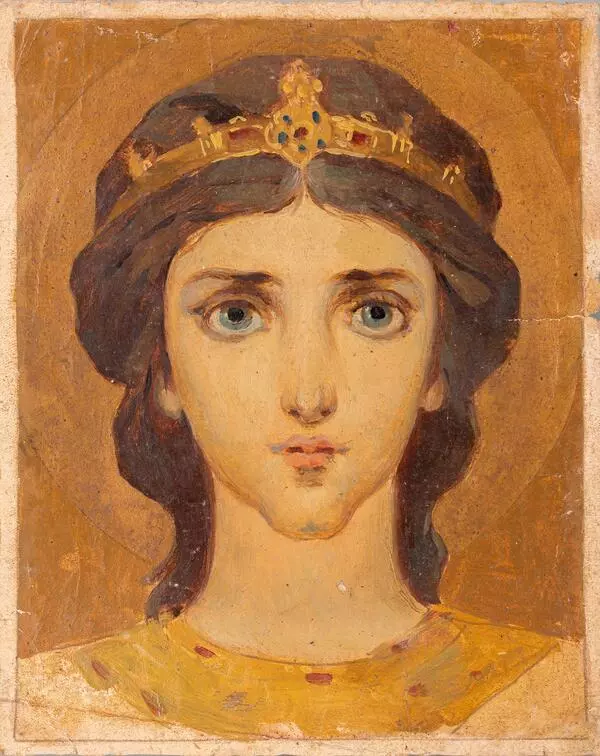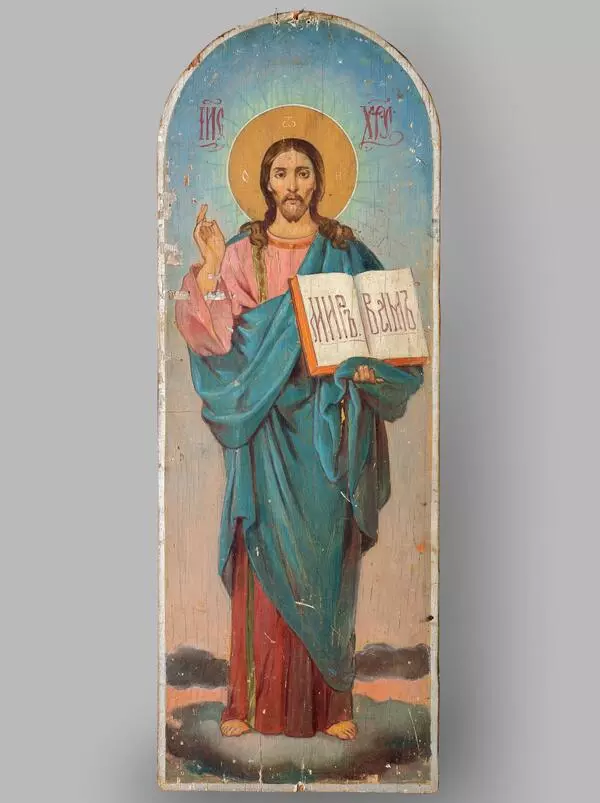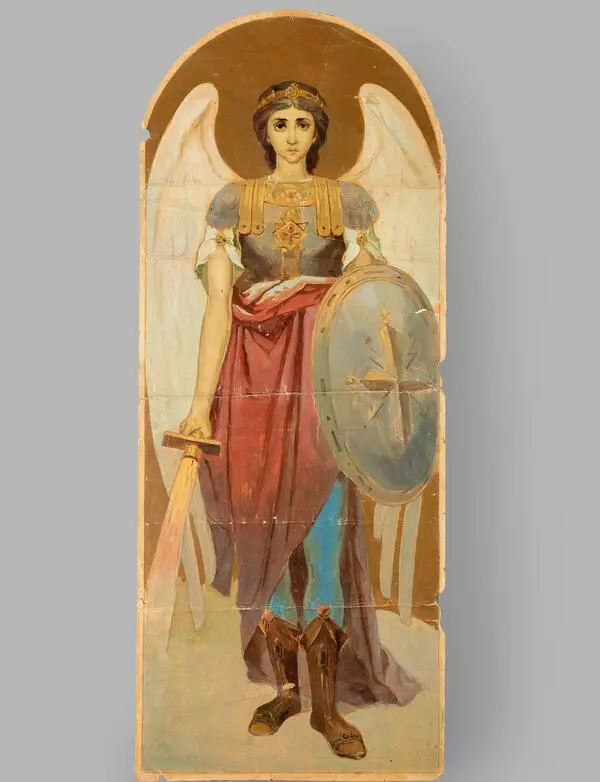Mikhail Ivanovich Khvostenko came from a peasant family from Borisovka. He was a representative of a dynasty of artists. His great-grandfather, a graduate of the St. Petersburg Academy of Arts, Arkhip Khvostenko, was set free by Count Boris Petrovich Sheremetev; his grandfather, Stepan Arkhipovich, was an icon painter; Mikhail’s father and uncle, Ivan Stepanovich and Veniamin Stepanovich, were artists as well.
Having been educated in Moscow, Mikhail gravitated towards church painting. Grand Duke Konstantin Konstantinovich took the artist with him on a pilgrimage to Palestine. There Khvostenko worked on the scenery and costumes for the play “King of Judea”, and painted icons. After the Russian Revolution, he founded a children’s art school in Borisovka.
The episode the artist chose to depict in the presented work — Agony in the Garden of Gethsemane — is one of the most common biblical subjects in church and secular art. It tells how Christ, after the Last Supper, already knowing about the coming betrayal and foreseeing the sufferings on the cross, goes with His closest disciples Peter, James and John to the Garden of Gethsemane and prays to His Heavenly Father. His tired and saddened students fall asleep and do not pray with the Teacher. In the first prayer, Christ asks, if possible, to let the cup of suffering for human sins pass Him by; in the second, He expresses His willingness to accept everything sent by the Father; in the third, He repeats the second prayer, strengthening His humility. In this episode, the sufferings of the Savior as the Son of Man and His power and mercy as the Son of God are most fully represented.
There is an established iconographic canon for depicting the Agony in the Garden. The central figure is a kneeling and praying Christ; in the distance (sometimes in the foreground) are His sleeping disciples and the Archangel Gabriel descending from heaven with a symbolic cup, which the Savior accepts. The outlines of a city and Judas leading the guards often appear in the background.
In the presented picture, the artist omitted minor figures and details, focusing the viewer’s attention on the image of Jesus. His face is sad, but at the same time calm, as it often is in icons. His white robes symbolize purity and Divine glory.
Having been educated in Moscow, Mikhail gravitated towards church painting. Grand Duke Konstantin Konstantinovich took the artist with him on a pilgrimage to Palestine. There Khvostenko worked on the scenery and costumes for the play “King of Judea”, and painted icons. After the Russian Revolution, he founded a children’s art school in Borisovka.
The episode the artist chose to depict in the presented work — Agony in the Garden of Gethsemane — is one of the most common biblical subjects in church and secular art. It tells how Christ, after the Last Supper, already knowing about the coming betrayal and foreseeing the sufferings on the cross, goes with His closest disciples Peter, James and John to the Garden of Gethsemane and prays to His Heavenly Father. His tired and saddened students fall asleep and do not pray with the Teacher. In the first prayer, Christ asks, if possible, to let the cup of suffering for human sins pass Him by; in the second, He expresses His willingness to accept everything sent by the Father; in the third, He repeats the second prayer, strengthening His humility. In this episode, the sufferings of the Savior as the Son of Man and His power and mercy as the Son of God are most fully represented.
There is an established iconographic canon for depicting the Agony in the Garden. The central figure is a kneeling and praying Christ; in the distance (sometimes in the foreground) are His sleeping disciples and the Archangel Gabriel descending from heaven with a symbolic cup, which the Savior accepts. The outlines of a city and Judas leading the guards often appear in the background.
In the presented picture, the artist omitted minor figures and details, focusing the viewer’s attention on the image of Jesus. His face is sad, but at the same time calm, as it often is in icons. His white robes symbolize purity and Divine glory.
